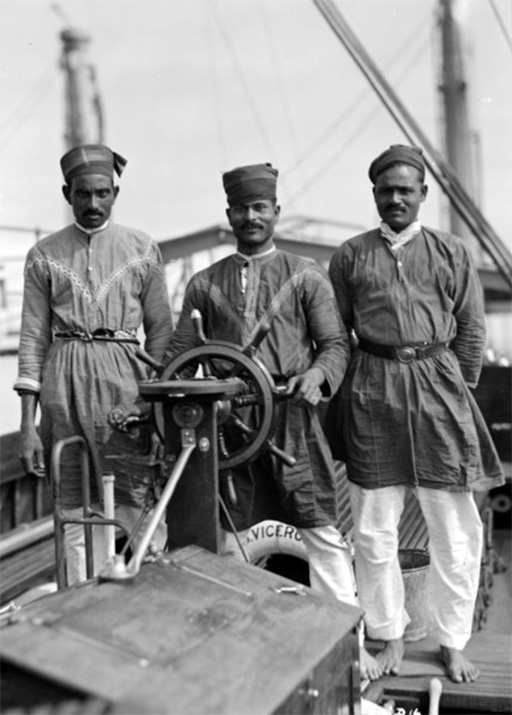2 How did Yemeni sailors come to live in Cardiff?
Yemeni, Somali and other Arab and Indian sailors worked on British registered merchant ships from the 1760s onwards, usually as cheaper labour on ships returning from India. The term ‘lascars’ was used to distinguish them – and other non-Europeans – from white British sailors. The word lascar originally comes from the Portuguese lascarim, which means Asian seaman. The term as used on British ships carried racialised meaning. While not all lascars were Muslim, the term also indicated religious difference from the mostly Christian British sailors.
As steam-powered shipping grew rapidly from the mid-nineteenth century, the importance of the lascars to the wealth and power of the British maritime economy grew. By the 1850s, approximately ten thousand lascars were employed on British merchant ships, and still thousands more on American- and European-registered vessels. Historians Dr Florian Stadtler and Rozina Visram estimate that by the start of the First World War in 1914, the number of lascars on British ships had risen to over 50,000. [Tip: hold Ctrl and click a link to open it in a new tab. (Hide tip)]
Lascars primarily worked in the engine rooms, stoking the fires that powered steam ships. Stereotypes emerged that lascars were pre-disposed to this work, because they were used to hot climates. But their work went beyond the furnace: they were also believed to have natural abilities suited to being stewards, cooks and other menial work usually associated with women. Perceptions of effeminacy (seen as a negative trait in seamen) were rooted in racist stereotyping. These stereotypes also meant that they were treated as second-class workers compared to white British seafarers. Their contracts were much more exploitative than those of white sailors, they were paid less, the main unions refused them permission to join, and the legislation that improved the working lives of white British sailors through the nineteenth and early twentieth centuries often did not apply to lascars.
When these sailors arrived at British ports, they often had to wait months before they got work on return vessels. So, over the course of the nineteenth and early twentieth centuries, communities of lascars settled in the ports where they landed: Cardiff, London, Liverpool, South Shields, Glasgow, and later in Hull and Manchester.

